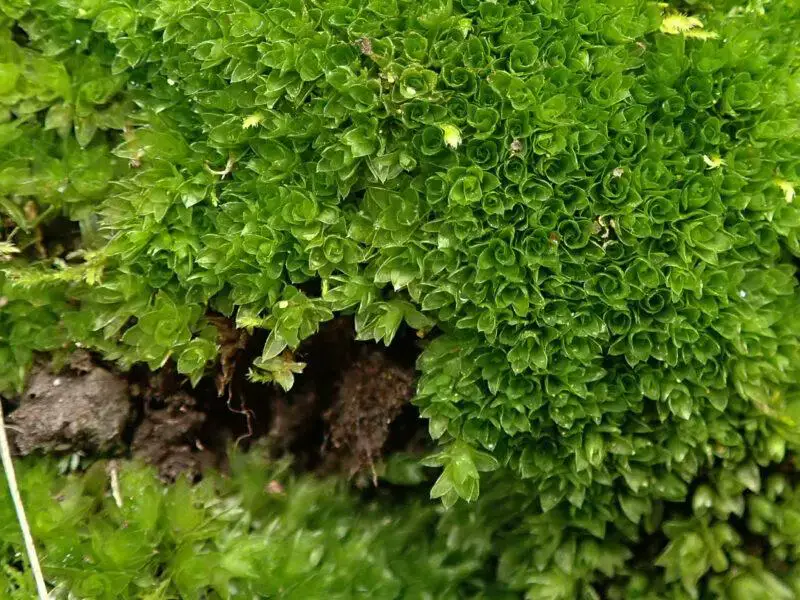
Bryum_donianum8.jpg from: https://maltawildplants.com/!faunafungi/maltawildlife.php?species=Bryum donianum
Introduction
In the vast and captivating world of bryophytes, one particular moss species stands out for its unique charm and ecological significance – the Bryum donianum Grev., commonly known as Bryum. This unassuming yet resilient member of the Bryaceae family has captured the hearts of moss enthusiasts worldwide, offering a fascinating glimpse into the intricate tapestry of nature’s smallest wonders.
Background
Before delving into the intricacies of Bryum donianum Grev., it’s essential to understand the broader context of bryophytes. These non-vascular plants, which include mosses, liverworts, and hornworts, are among the oldest lineages of land plants, dating back over 400 million years. Despite their diminutive stature, bryophytes play a crucial role in various ecosystems, acting as pioneers in colonizing barren landscapes and contributing to soil formation and moisture retention.
Main Content
Morphology and Identification
Bryum donianum Grev. is a small, acrocarpous moss that forms dense, cushion-like tufts or mats. Its slender stems are typically less than an inch tall, adorned with delicate, lance-shaped leaves that are spirally arranged. One of the most distinctive features of this moss is its reddish-brown coloration, particularly evident in the older portions of the plant.

medium.jpg from: https://www.inaturalist.org/taxa/485487-Bryum-donianum
When it comes to reproduction, Bryum donianum Grev. employs a unique strategy. Like other bryophytes, it exhibits an alternation of generations, with the gametophyte (the leafy plant) producing the sporophyte (the spore-bearing structure). The sporophyte consists of a slender seta (stalk) topped by a capsule containing spores, which are dispersed to propagate the species.
Global Distribution and Habitat
Bryum donianum Grev. is a cosmopolitan species, found on every continent except Antarctica. It thrives in a wide range of habitats, from urban areas to natural landscapes, showcasing its remarkable adaptability. This moss can be found growing on soil, rocks, tree bark, and even concrete surfaces, often forming vibrant green or reddish-brown carpets.

2018-01-23-13.32.28-800×600.jpg from: https://www.britishbryologicalsociety.org.uk/learning/species-finder/bryum-donianum/
One of the key factors contributing to the success of Bryum donianum Grev. is its tolerance for various environmental conditions. It can withstand periods of drought by entering a state of dormancy, only to revive when moisture becomes available again. This resilience has allowed the moss to colonize diverse habitats, from arid regions to temperate forests.
Ecological Roles and Adaptations
Despite its diminutive size, Bryum donianum Grev. plays a vital role in its ecosystems. As a pioneer species, it is often among the first to colonize disturbed or barren areas, paving the way for other plants to establish themselves. The moss acts as a natural sponge, absorbing and retaining moisture, creating favorable conditions for other organisms to thrive.
Moreover, Bryum donianum Grev. contributes to soil formation and nutrient cycling. As the moss grows and decomposes, it releases organic matter into the soil, enriching it with essential nutrients. This process facilitates the growth of other plants and supports a diverse array of microorganisms and invertebrates.
One of the remarkable adaptations of Bryum donianum Grev. is its ability to desiccate and revive. During periods of drought, the moss can lose up to 98% of its water content without suffering permanent damage. When moisture becomes available again, the moss can rapidly rehydrate and resume its metabolic activities, a feat that has fascinated scientists and moss enthusiasts alike.
Case Studies/Examples
Bryum donianum Grev. has been the subject of numerous scientific studies, shedding light on its unique characteristics and ecological significance. For instance, researchers have investigated the moss’s ability to accumulate heavy metals, making it a potential biomonitor for environmental pollution.

Bryum-Argenteum-Silver-Moss-Sidewalk-Moss-Crack-Moss-Asphalt-Moss-6-1024×583.jpg from: https://mossandstonegardens.com/species/silver-moss-bryum-argenteum-ecology-distribution-cultivation/
In urban areas, Bryum donianum Grev. has been observed growing on concrete surfaces, demonstrating its resilience and ability to thrive in human-modified environments. This has led to its use in green infrastructure projects, where the moss is employed to enhance the aesthetic appeal and ecological value of urban spaces.
Technical Table
| Characteristic | Description |
|---|---|
| Scientific Name | Bryum donianum Grev. |
| Common Name | Bryum |
| Family | Bryaceae |
| Division | Bryophyta |
| Class | Bryopsida |
| Growth Form | Acrocarpous moss, forming dense tufts or mats |
| Leaf Arrangement | Spirally arranged, lance-shaped leaves |
| Color | Green to reddish-brown |
| Reproduction | Alternation of generations (gametophyte and sporophyte) |
| Habitat | Soil, rocks, tree bark, concrete surfaces |
| Distribution | Cosmopolitan, found on every continent except Antarctica |
| Ecological Roles | Pioneer species, soil formation, moisture retention, nutrient cycling |
| Adaptations | Desiccation tolerance, rapid rehydration |
Conclusion
Bryum donianum Grev., the unassuming yet remarkable Bryum moss, serves as a testament to the resilience and ecological significance of bryophytes. From its unique morphology and reproductive strategies to its global distribution and adaptations, this moss species offers a captivating glimpse into the intricate world of nature’s smallest wonders.
As we continue to explore and appreciate the diversity of life on our planet, Bryum donianum Grev. reminds us of the importance of preserving and protecting even the most inconspicuous organisms, for they play vital roles in maintaining the delicate balance of our ecosystems.
Ponder this: In a world where we often overlook the smallest beings, what other wonders might we be missing, and how can we foster a deeper appreciation for the intricate tapestry of life that surrounds us?